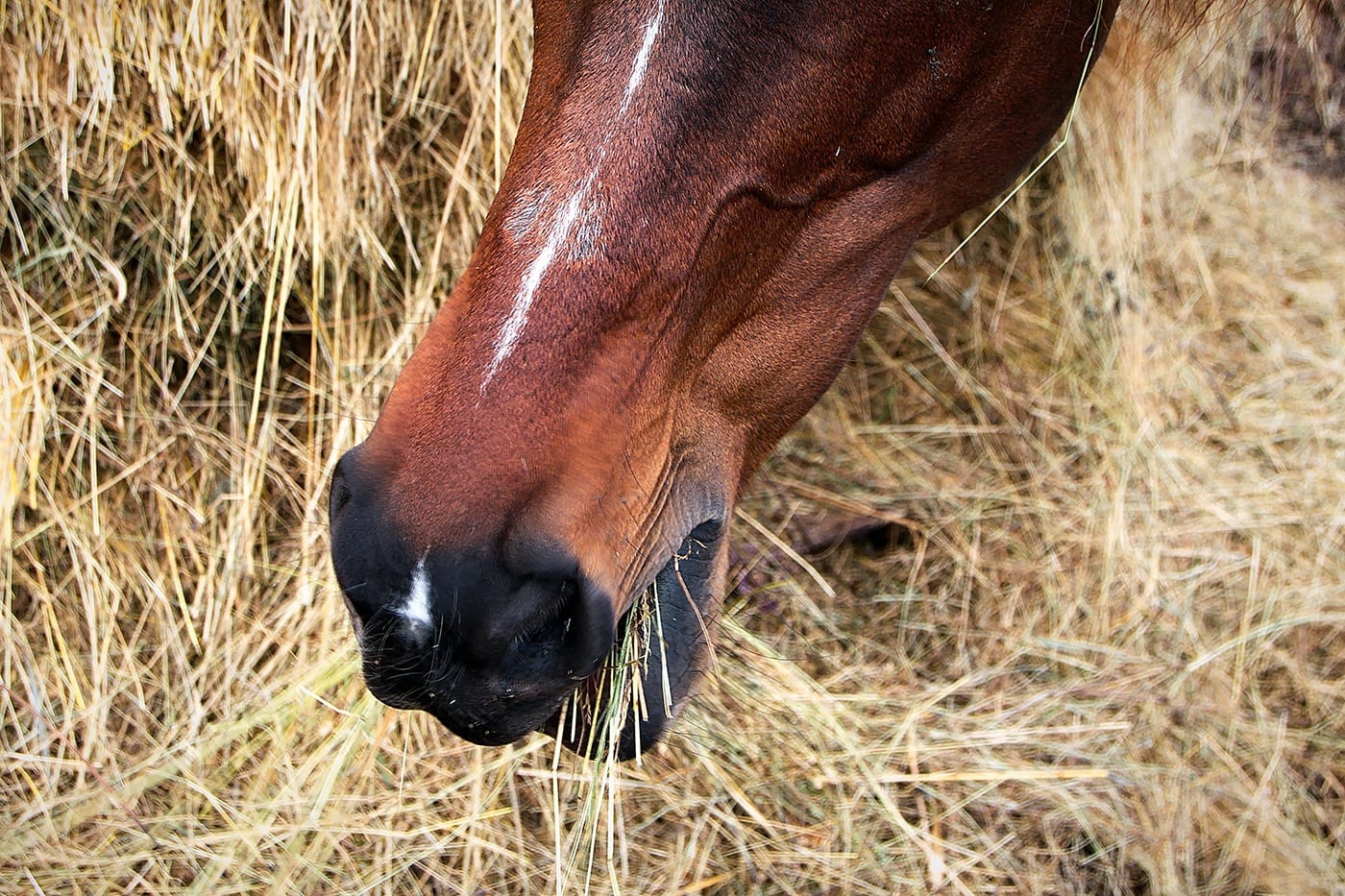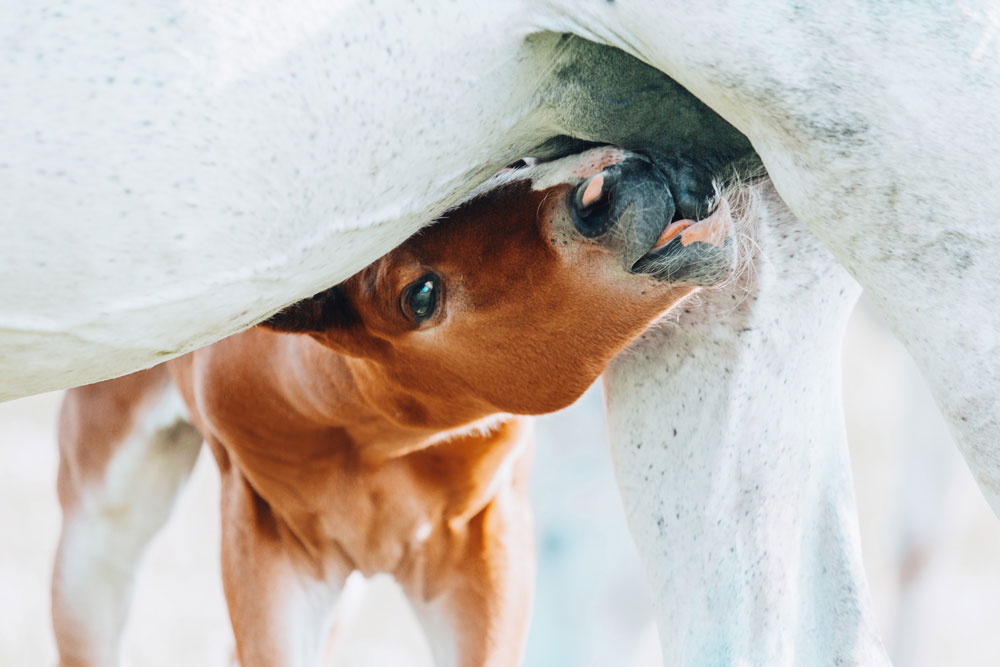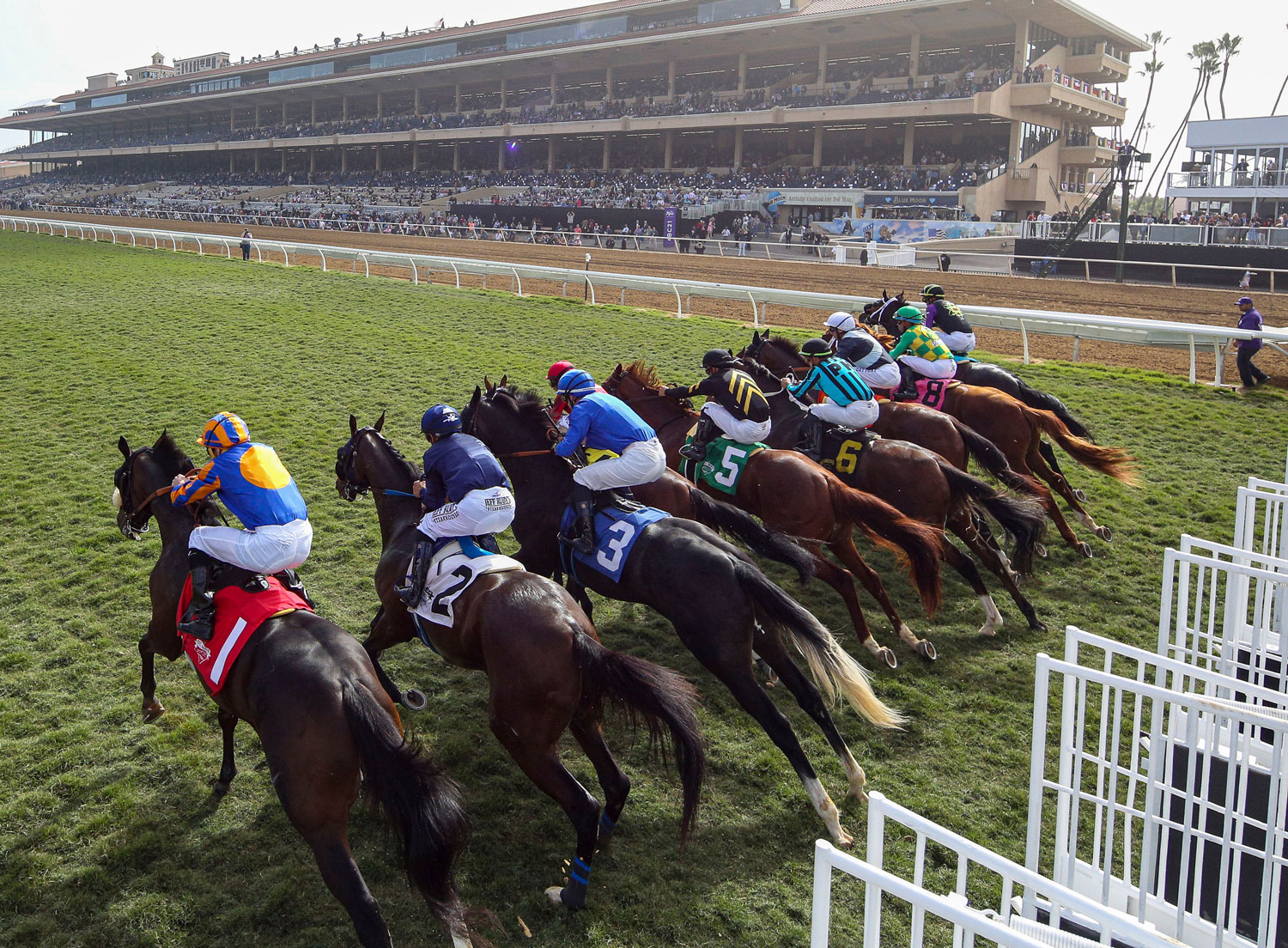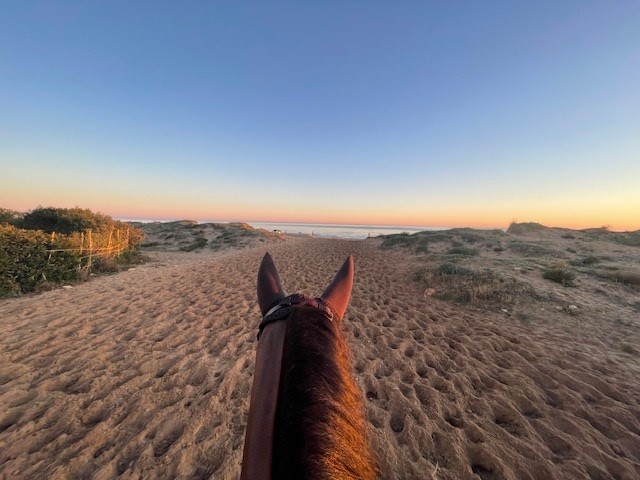One topic that often comes up among horse owners is whether to feed hay or grain first. Because horses expecting grain will often paw at their stall doors or whinny, some people tend to give hard feeds first, then follow with hay. Others hold by the logic that the hay should act as a kind of “appetizer” for the main dish. In theory, taking the edge off hunger may discourage a horse from bolting grain and help with digestion (and keep you from getting knocked down at the door).
Regardless of what camp you fall into, here’s some news: It’s a myth that you should feed horses grain before hay. However, here’s some additional news: It’s also a myth that you should feed horses hay before grain.
Confused yet? Don’t be; simply know that your grain feed schedule isn’t as critical—so long as you’re emphasizing forage-first. Or more accurately, forage-always.
The key is a return to better, basic horse husbandry which includes feeding free access to grass and/or hay, feeding forage-based feeds like beet pulp instead of grain and mixing chaff with grain to encourage better digestion. Here’s a look at how at how and why these management methods are the best choices for your horse’s health.
Feed Horses Free-Choice Hay Around the Clock
Here’s what Juliet M. Getty, Ph.D. of Getty Equine Nutrition had to say about the topic in a press release (Hay before grain, or vice versa?) published on March 31, 2017:
“This is a recurring question that I receive: Which should be fed first — hay or grain? If you’re feeding correctly, this issue is truly a moot point because the horse should have access to forage in hay and/or pasture 24/7 with no gaps. Therefore, when fed concentrates, the horse’s digestive tract should already have hay flowing through it.”
It’s easy to see why you should provide forage around-the-clock when you look more closely at the horse’s digestive system. In nature, horses have evolved to graze up to 18 hours per day, ingesting small, regular meals made up of fibrous materials, such as grasses, seeds and hay. Watch horses at pasture and you’ll find them slowly ambling around the field, snatching a bite of grass every few steps. If there’s no grass left, you’ll find them munching at the hay rack for most of the day.
That’s because horses need to eat a forage based diet with limited complex carbohydrates in order to allow for proper (read: slow and thorough) digestion.
Up to 70 percent of a horse’s energy comes from digestion of forage in the hindgut, a process which takes two to three days after ingestion. Additionally, the constant chewing produces saliva, a steady stream of which helps buffer acid in the stomach. The slow, steady trickle of forage and saliva into the stomach naturally provides bulk that absorbs acid, thus protecting the sensitive mucosal lining.
Hay, grass and chaff are ideal foods for horses, as they require lots of chewing, are digested slowly, and provide plenty of fiber without excess calories. They’ll also keep a horse comfortably occupied for hours.
Why Hay is Even More Important When You’re Also Feeding Grain
In an ideal world, all horses would have access to free-choice hay or grass at all times. But in the real world, it’s not always practical to feed only hay or grass. Horses with rigorous training or competition schedules may require more calories than they can consume through forage alone. Yet, feeding large meals of grain or hard feed, such as oats, wheat or barley — or feeding it on an empty stomach — can be problematic for horses. This is know to lead to both:
- Stomach challenges – an empty stomach becomes vulnerable to irritation from acids.
- Hindgut challenges – when the stomach’s already empty and/or a hungry horse bolts its feed, those starchy grains tend to move through the stomach even more quickly—before they are fully digested.
A horse’s stomach produces acid continually, whether or not the horse is eating. That’s why keeping it filled with a steady trickle of forage is critical. Going for hours with no grass or hay poses several problems for the horse:
When fed in higher amounts, grain can pass through the stomach undigested, ending up in the hindgut. The hindgut’s delicate microbial balance gets disrupted and may develop problems as a result.
Again, from Dr. Getty:
“A better approach is to have hay present in the stomach first. It creates a physical barrier for the grain, making it leave the stomach less quickly. The fiber in the hay mixes with the starch and the whole mass enters the small intestine to be digested. Fiber is not digested until it reaches the hindgut, but its presence slows down the digestion of starch, and obstructs the absorption of glucose into the bloodstream, leading to a less dramatic rise in insulin.”
Emphasize Forage and Forage-Based Feeds for Healthier Horses
Feed Horses Free Access to Grass and Hay
If you can, give your horse free access to grass. Fresh grass naturally provides the carbohydrates, protein and minerals a horse needs. If you can’t, this series on feeding hay to horses can help you set up a healthy routine for your horse. Grass and hay can provide most of the nutrients horses need, as well as up to 70 percent of a horse’s energy requirements.
Use Beet Pulp Instead of Grain
Additionally, consider reducing grains in the diet and feeding beet pulp instead. Beet pulp offers a higher-calorie forage-based feed option for horses who have greater energy requirements. Beet pulp is a fibrous byproduct of sugar beets, after the sweet stuff has been taken out. Along the way, it’s chopped or sliced, and then dried to prevent it from molding. You can buy it in either a shredded or a pelleted form.
Beet pulp is also a complex carbohydrate that is fermented in the horse’s hindgut, making it a good choice to help enhance hindgi tract health. Beet pulp provides an excellent source of digestible fiber and has a similar calorie profile as oats — but with fewer starches and sugars. Most people prefer to feed it soaked, but technically it is safe to feed dry as well. Be sure to look for beet pulp that doesn’t have molasses added.
Add Hay Chaff to Grain to Increase Chewing
Another great option to encourage healthier digestion is to mix chaff (simply chopped hay) in with your horse’s grain feed. The chaff will force the horse to chew more thoroughly, which slows ingestion and produces more saliva. Both of these benefits are extremely helpful for the horse’s stomach health.
Feed SUCCEED to get the Most From a Forage-Based Diet and Support Healthy Digestion
Additionally, feeding SUCCEED can help your horse extract the full nutrition available from his feed. It’s formulated with a mix of nutritional ingredients designed to support the total health of the equine digestive tract. Ingredients such as oat oil, oat flour and yeast products are specially extracted to retain high levels of key components (such as beta glucan, polar lipids and mannan oligosaccharides) highly beneficial for natural gi tract health. These work together to support the structure and function of the gastrointestinal tract, and promote healthy bacterial balance, immunity, feed transit through the digestive tract and nutrient absorption.
By supporting your horse’s digestive system, you’re helping him get the most nutrition possible from what you’re feeding.
Hay before grain? It doesn’t matter. So long as you always provide plenty of hay.




